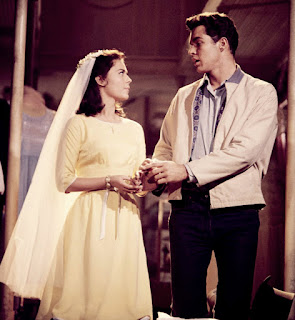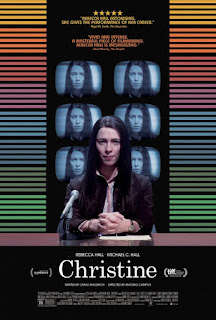Bright Midnight: Live in America is a live album by the band The Doors released in 2001. It is a compilation of recordings of concerts performed in the United States between July 1969 and August 1970. All songs written by Jim Morrison, Robby Krieger, Ray Manzarek and John Densmore except "Back Door Man" (written by Willie Dixon & Chester Burnett) and "Alabama Song/Whisky Bar" (written by Bertolt Brecht & Kurt Weill).
Several famous musicians have died at the age of 27. Can it just be a tragic coincidence? Rolling Stone writer Gantry Elliot always thought so. But as mysterious packages arrive and clues unfold, Gantry soon realizes someone knows the truth behind these deaths. Chris Formant presents an intriguing scenario about the deaths of several iconic rock and roll musicians from the late ’60s and early ’70s. What if, instead of accidental deaths or suicide, these rock and roll stars were actually murdered? And if this is the case, what possible reason would someone have for killing them just as they were at the pinnacle of stardom? Could Jimi Hendrix, Jim Morrison and Janis Joplin have been murdered, seen as 'enemies of the state'? Gantry Elliot becomes convinced there is truth to the allegations and he turns to close friend and record expert, Dennis Briganty, and FBI Agent Melendez to aid his investigation. Chris Formant presents an inventive (and plausible) theory for the long ago deaths of these famous rock and roll legends that is guaranteed to appeal to classic rock fans and conspiracy buffs. Source: www.amazon.com
DANNY SAYS (2016) directed by Brendan Toller, is a documentary on the life and times of Danny Fields. Since 1966, Danny Fields has played a pivotal role in music and "culture" of the late 20th century: working for the Doors, Lou Reed, Nico, Judy Collins, and managing groundbreaking artists like the Stooges, the MC5 and the Ramones. DANNY SAYS follows Fields from Harvard Law dropout, to the Warhol Silver Factory, to Director of Publicity at Elektra Records, to "punk pioneer." Danny's taste and opinion, once deemed defiant and radical, has turned out to have been prescient. DANNY SAYS is a story of avant-garde turning prophetic, as Fields looks to the next generation.
Jim Morrison was now isolating himself from The Doors, taking long solitary walks around the empty streets of lower Manhattan. One night Elektra publicist Danny Fields took Jim out to the fabled back room of Max’s Kansas City on Park Avenue South, the ground zero of Manhattan’s downtown hipoisie. “Light My Fire” played incessantly on Max Kansas City’s juke-box, but no one—artists, musicians, dealers—bothered to look at Jim as he sauntered by in his leather trousers.
Danny Fields introduced German singer Nico to Jim Morrison at ‘The Castle,’ a Los Angeles mansion of the 1920’s which was being rented by Arthur Lee (frontman of the band Love) and had become a hangout for the Los Angeles/Sunset Strip rock scene. Danny Fields thought Nico and Jim Morrison ‘would make a cute couple.’ Morrison “had a wonderful sense of manners. When he wasn’t drunk he was a pussycat, but when he got drunk he became a redneck boozer like the kind you’d see in some Alabama bowling alley.” Both Nico and Morrison took LSD and had an immediate attraction to one another; later that night they did end up naked and walking on the parapet of ‘The Castle.’
Nico dyed her hair red, although Jim Morrison didn’t pursue the relationship, since he returned to Pamela Courson (his 'cosmic mate'), but such was the obsession of Nico that she left her hair colored red even after Morrison’s death. "He was the first man I was in love with, because he was affectionate to my looks and my mind. But we took too much drink and too many drugs to make it, that was our difficulty," said Nico. Source: thedailyhatch.org
Jim Morrison loved Pamela Courson to death. Morrison cheated on her (and she on him), but he always came back to her side. He dedicated his poetry to her, and left her everything in his will. Pamela Susan Morrison is one of the more enigmatic figures of the American sixties. She would carve out her own legend of romance, high style and excess that rivaled Jim Morrison’s for recklessness and danger. Morrison spent unbelievable amounts of money keeping Pamela's fashion boutique Themis afloat. “Jim was always giving her stuff,” Paul Ferrara recalled: “Money, clothes, cars, anything. He pampered the hell out of her. She’d want something, and he’d call Max Fink and say, ‘Give her whatever she wants.’ Money meant nothing to Jim. It was immaterial to him, as long as she was happy.” When Pamela said she wanted a place in the country, Jim paid for a secluded cabin, up in tranquil Topanga Canyon. The Doors’ accountant later estimated that Jim spent a quarter million preinflation dollars on Pam's boutique.
Jim Morrison's self-destructiveness led him to personally dangerous and professionally suicidal outbursts. But along with this mean streak, and with the drug and alcohol use that greatly exacerbated it, came the heady idealism that accounts for part of the Doors' long-lived popularity. Oliver Stone's film The Doors, at times, dares to make the outrageous suggestion that he died for his audience's sins. The flimsy portrayal of Pamela Courson (by Meg Ryan), who died of a heroin overdose in 1974, offended the surviving Doors. Ray Manzarek disowned the whole film. At his most darkly ecstatic, Jim Morrison could invoke the liberating influences of mind-expanding drugs and literature. John Densmore (The Doors' drummer) wrote in his memoir that Morrison was "headed straight for a sad death in a gutter." Bloated, bearded and alcoholic, paranoid about persistent official persecution, Jim Morrison fled to Paris, battled his demons while writing poetry, and eventually died in a bathtub on July 3, 1971. –"Jim Morrison: Life, Death, Legend" (2005) by Stephen Davis.
DANNY SAYS (2016) directed by Brendan Toller, is a documentary on the life and times of Danny Fields. Since 1966, Danny Fields has played a pivotal role in music and "culture" of the late 20th century: working for the Doors, Lou Reed, Nico, Judy Collins, and managing groundbreaking artists like the Stooges, the MC5 and the Ramones. DANNY SAYS follows Fields from Harvard Law dropout, to the Warhol Silver Factory, to Director of Publicity at Elektra Records, to "punk pioneer." Danny's taste and opinion, once deemed defiant and radical, has turned out to have been prescient. DANNY SAYS is a story of avant-garde turning prophetic, as Fields looks to the next generation.
Jim Morrison was now isolating himself from The Doors, taking long solitary walks around the empty streets of lower Manhattan. One night Elektra publicist Danny Fields took Jim out to the fabled back room of Max’s Kansas City on Park Avenue South, the ground zero of Manhattan’s downtown hipoisie. “Light My Fire” played incessantly on Max Kansas City’s juke-box, but no one—artists, musicians, dealers—bothered to look at Jim as he sauntered by in his leather trousers.
Danny Fields introduced German singer Nico to Jim Morrison at ‘The Castle,’ a Los Angeles mansion of the 1920’s which was being rented by Arthur Lee (frontman of the band Love) and had become a hangout for the Los Angeles/Sunset Strip rock scene. Danny Fields thought Nico and Jim Morrison ‘would make a cute couple.’ Morrison “had a wonderful sense of manners. When he wasn’t drunk he was a pussycat, but when he got drunk he became a redneck boozer like the kind you’d see in some Alabama bowling alley.” Both Nico and Morrison took LSD and had an immediate attraction to one another; later that night they did end up naked and walking on the parapet of ‘The Castle.’
Nico dyed her hair red, although Jim Morrison didn’t pursue the relationship, since he returned to Pamela Courson (his 'cosmic mate'), but such was the obsession of Nico that she left her hair colored red even after Morrison’s death. "He was the first man I was in love with, because he was affectionate to my looks and my mind. But we took too much drink and too many drugs to make it, that was our difficulty," said Nico. Source: thedailyhatch.org
Jim Morrison loved Pamela Courson to death. Morrison cheated on her (and she on him), but he always came back to her side. He dedicated his poetry to her, and left her everything in his will. Pamela Susan Morrison is one of the more enigmatic figures of the American sixties. She would carve out her own legend of romance, high style and excess that rivaled Jim Morrison’s for recklessness and danger. Morrison spent unbelievable amounts of money keeping Pamela's fashion boutique Themis afloat. “Jim was always giving her stuff,” Paul Ferrara recalled: “Money, clothes, cars, anything. He pampered the hell out of her. She’d want something, and he’d call Max Fink and say, ‘Give her whatever she wants.’ Money meant nothing to Jim. It was immaterial to him, as long as she was happy.” When Pamela said she wanted a place in the country, Jim paid for a secluded cabin, up in tranquil Topanga Canyon. The Doors’ accountant later estimated that Jim spent a quarter million preinflation dollars on Pam's boutique.
Jim Morrison's self-destructiveness led him to personally dangerous and professionally suicidal outbursts. But along with this mean streak, and with the drug and alcohol use that greatly exacerbated it, came the heady idealism that accounts for part of the Doors' long-lived popularity. Oliver Stone's film The Doors, at times, dares to make the outrageous suggestion that he died for his audience's sins. The flimsy portrayal of Pamela Courson (by Meg Ryan), who died of a heroin overdose in 1974, offended the surviving Doors. Ray Manzarek disowned the whole film. At his most darkly ecstatic, Jim Morrison could invoke the liberating influences of mind-expanding drugs and literature. John Densmore (The Doors' drummer) wrote in his memoir that Morrison was "headed straight for a sad death in a gutter." Bloated, bearded and alcoholic, paranoid about persistent official persecution, Jim Morrison fled to Paris, battled his demons while writing poetry, and eventually died in a bathtub on July 3, 1971. –"Jim Morrison: Life, Death, Legend" (2005) by Stephen Davis.































































